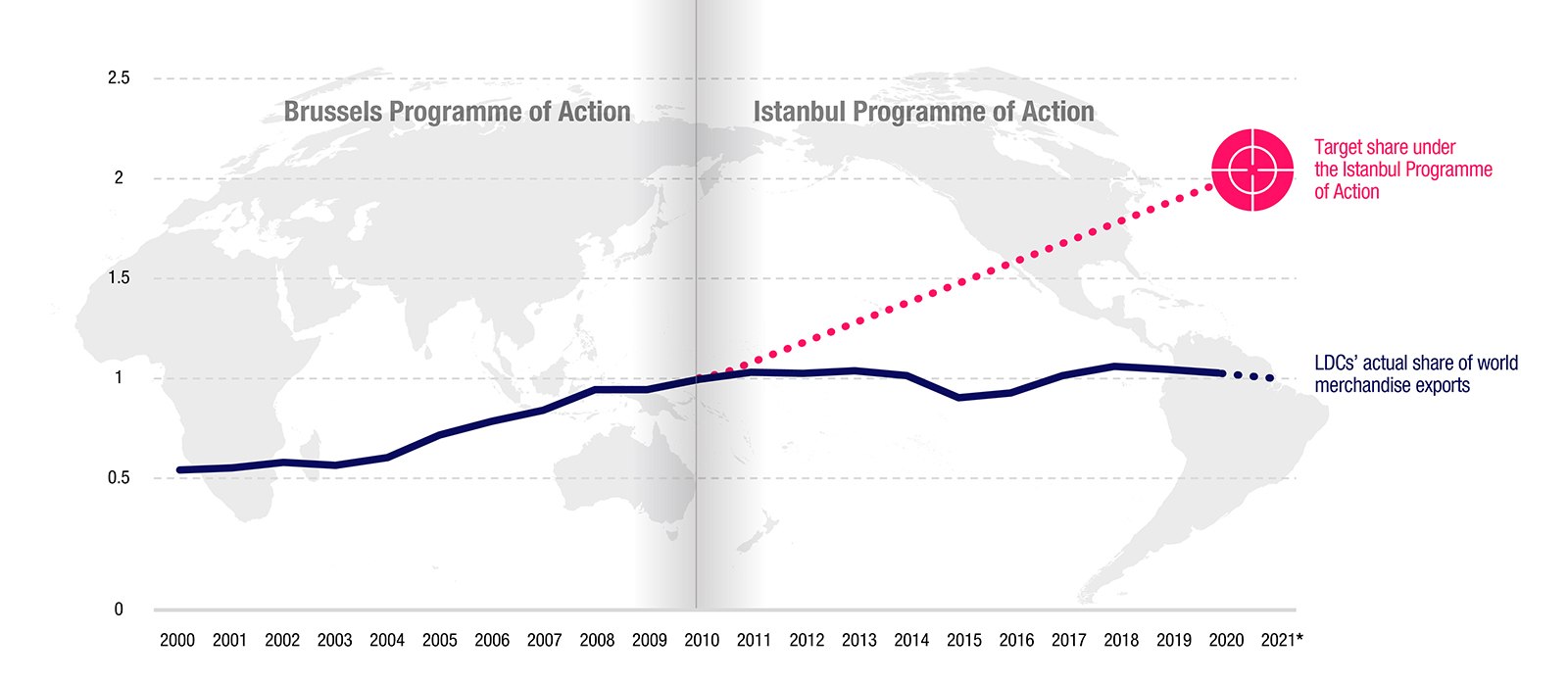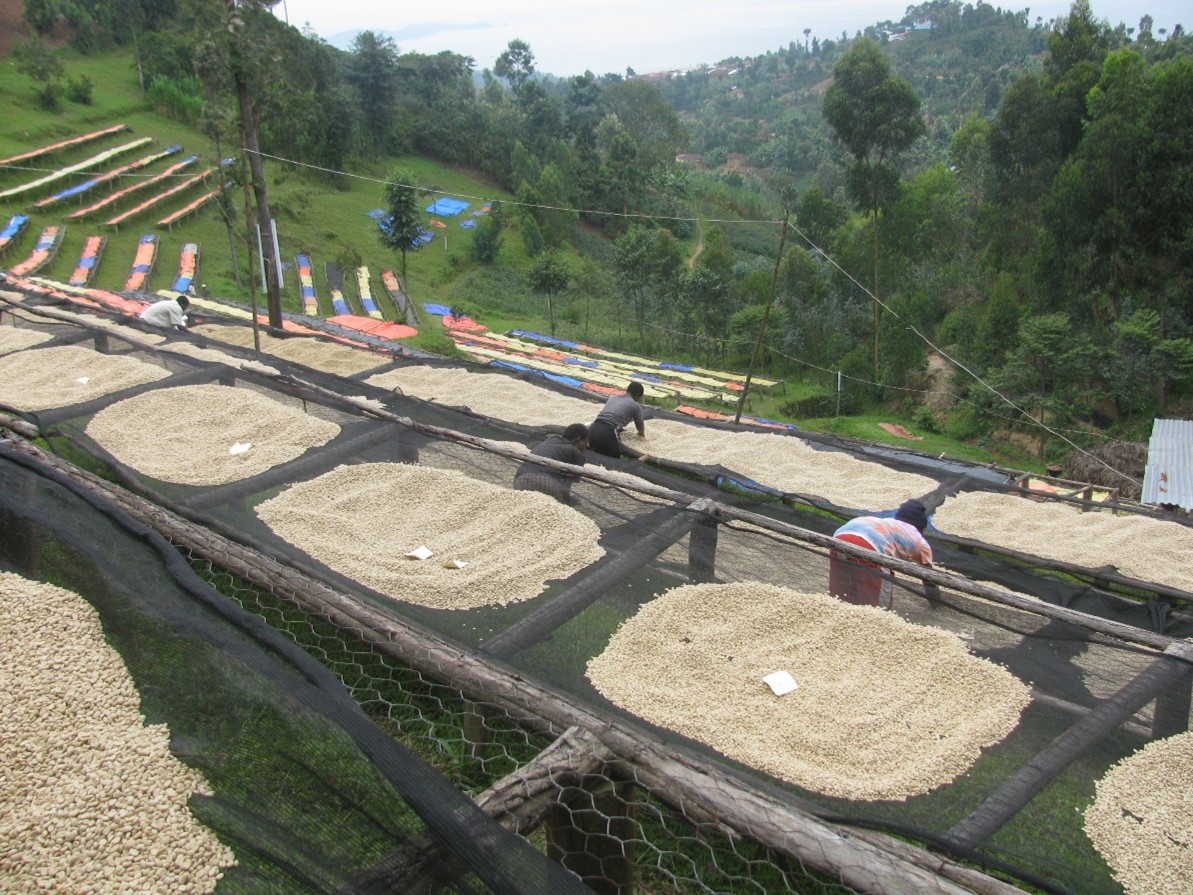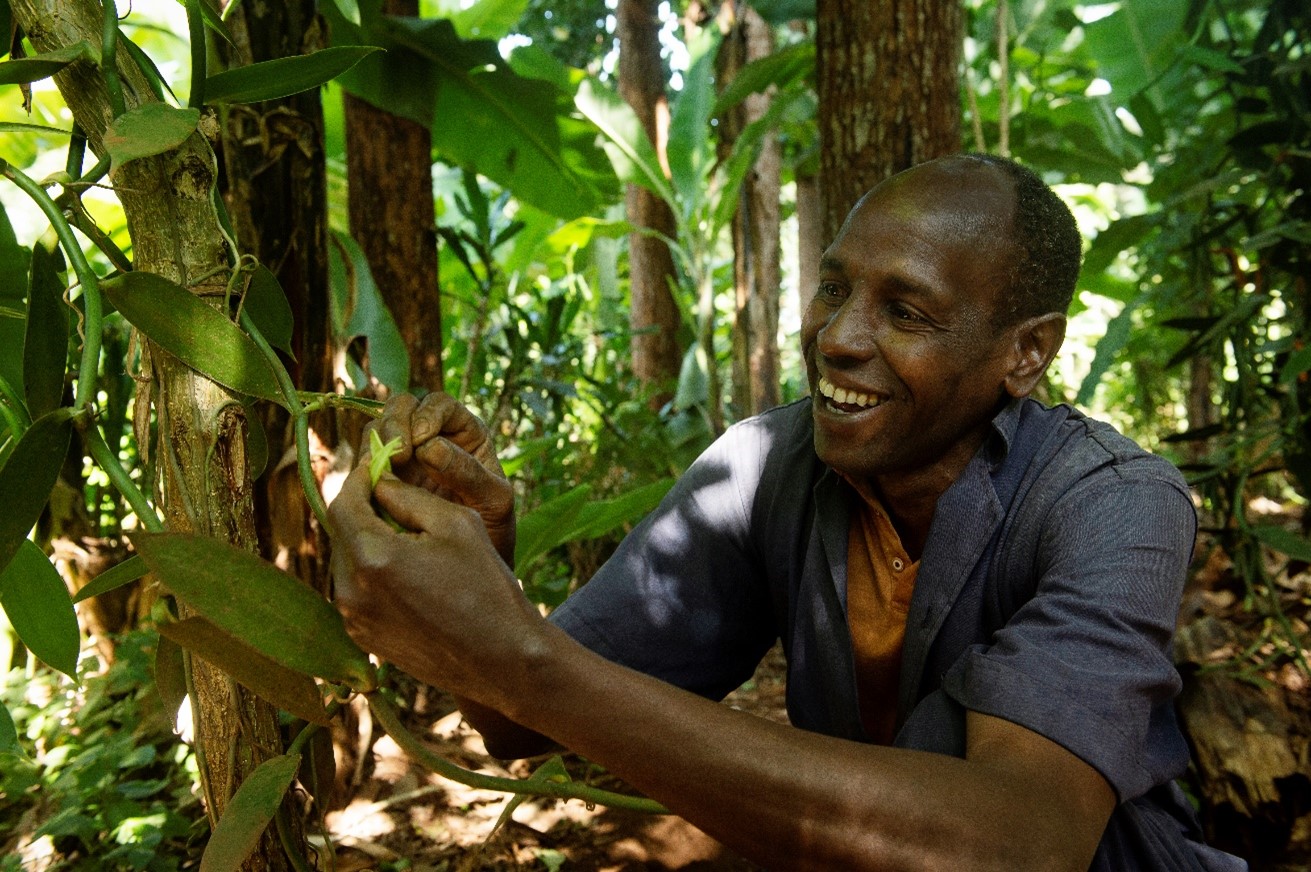CFC invests to ease commodity dependence in the Least Developed countries
Commodities are the basic products that underpin both the present and future of most of the Least Developed Countries (LDCs). When more than 60% of the total value of a country’s merchandise exports are these basic products, the country is said to be commodity dependent. When a country’s economy is not diversified and relies too heavily on these types of resources, it is extremely vulnerable to fluctuating international market prices. When prices go down, employment, exports and revenue all suffer.
This vulnerability is at the core of many of the economic, social and environmental challenges faced by developing countries. Addressing the challenges posed by commodity dependence is central to what the CFC has been doing, from reducing poverty and fostering equality to protecting the planet and preserving peace, to achieve the UN’s Sustainable Development Goals.
What are Least Developed Countries?
Least developed countries (LDCs) are low-income countries which are confronting severe structural impediments to sustainable development. They are highly vulnerable to economic and environmental shocks and have low levels of human assets. Currently, 46 countries are classified as LDCs.
To support their development, a series of comprehensive programs of action for LDCs were adopted at successive United Nations Conferences on the Least Developed Countries. The latest is the Doha Programme of Action (DPoA) for the decade 2022-2031, which was recently adopted by the UN member states.
The connection between LDCs and commodity dependence
In 2018-2019, 64% of developing countries were commodity dependent, compared to 13% of developed countries[1]. As such, commodity dependence is mainly an issue of LDCs, and is often perpetuated by the fact that commodity dependence causes economic vulnerability, but is hard to overcome due to lack of competitiveness in other sectors. Comparing the periods 2008-2010 (before the Istanbul Programme of Action (IPoA) for the decade 2011-2020) and 2018-2020 (after implementation of the IPoA), LDC export capacities expanded, even in spite of the COVID-19 pandemic. Furthermore, the overall proportion of primary commodity exports declined during this period – dropping from 74% of total merchandise exports to 63%. But that is still above the 60% threshold that determines commodity dependency. In 2018-2020, LDCs accounted for 2.4% of the global trade in primary commodities, but only 0.6% of the global trade in manufactures, highlighting the persistent challenge of export diversification. Notably, the number of commodity-dependent LDCs has slightly increased since the implementation of the IPoA – from 34 to 37[2].
Least developed countries remain marginalized in global exports[3]

Source: UNCTAD secretariat calculations based on data from UNCTADstat database.
Notes: * Data for 2021 are preliminary forecasts. In the scenario consistent with the Istanbul Programme of Action (IPoA) target, the increase in LDCs’ share of global exports is computed on a linear basis.
According to UNCTAD, LDCs’ share of world exports doubled from 0.55% to 1.03% between 2001 and 2010 (the term of the Brussels Programme of Action (BPoA)), mainly due to a surge in commodity prices. Yet their share of global merchandise exports remained at about 1% since 2010 – as shown in the above chart – meaning that the IPoA target of doubling their share could not be met even before the COVID19 pandemic hit. In fact, looking at pre-pandemic trends, less than a quarter of the 46 LDCs seem to be on the path to achieve this target.
In light of these results and with the Fifth UN Conference on LDCs for the next program of action underway, it is clear that the international community must further prioritize policies addressing LDCs’ productive capacities so that they can meaningfully participate in international trade, and ultimately enhance their export capacities.
The role of the CFC and impact investing in LDCs
LDCs have been recognized as an especially vulnerable priority group by the CFC. Therefore, the CFC is financing projects addressing the specific weaknesses of commodity-dependent developing countries, with particular focus on LDCs.
Interventions are usually aimed at the initial stages of commodity value chains, including productivity and quality improvements, price risk management systems, and marketing and marketability of commodity products. The CFC’s approach to supporting pilot projects is not about "flooding a problem with money". Instead, the benefits arise from making strategic interventions with modest expenditure that effectively address specific problems affecting commodity production and marketing. In this way, the CFC seeks to create new opportunities for income generation and wealth accumulation in LDCs.
Under the BPoA (2001-2010), the CFC approved 114 projects involving LDCs with a total cost of USD 162 million, covering commodities such as bamboo, bananas, cashews, cassava, coffee, cotton, dairy, fisheries, fruits and vegetables, grains, groundnuts, hides and skins, horticulture, jute, kenaf, medicinal plants, potatoes, rubber, sesame, shea nuts, sorghum, sisal and sugar. These projects aimed to enhance the incomes of smallholder producers through increases in production and productivity, horizontal and vertical diversification, value-addition, increasing access to markets and capacity building.
The reform of the CFC took place in 2012, shortly after the launch of the IPoA. Since that time, the CFC’s Executive Board has approved 34 projects involving LDCs, with a total value of USD 82.2 million, of which USD 37.2 million was contributed by the CFC. These projects cover commodities like pulses, cereals, coffee, avocado, edible oil, and cassava, and are spread across a wide range of countries, including Bangladesh, Benin, Burundi, Madagascar, Myanmar, Senegal, Tanzania and Zambia. The current CFC portfolio counts ten projects in LDCs, which are expected to benefit 115,000 smallholder farmers – of which 41% are females – and to create 3,800 new jobs.
In addition to these projects, the CFC also supports seven impact funds covering 12 LDCs, with a contribution of USD 7.4 million. These combined efforts make clear that the CFC is dedicated to enabling LDCs to achieve more positive socioeconomic and environmental results, helping them achieve their full potential.
Recovering from COVID-19 and overcoming commodity dependence
Moving forward, the Fifth United Nations Conference on the Least Developing Countries (LDC5) is a renewed opportunity to mobilize international support through the DPoA for the decade 2022- 2031. The DPoA will focus on building resilience to recover from the COVID-19 pandemic, which significantly hampered progress towards the 2030 Agenda for Sustainable Development, by addressing six key areas:
- Investing in people in LDCs: eradicating poverty and building capacity to leave no one behind
- Leveraging the power of science, technology and innovation to fight against multidimensional vulnerabilities and to achieve the SDG
- Supporting structural transformation as a driver of prosperity
- Enhancing international trade of LDCs and regional integration
- Addressing climate change, environmental degradation, recovering from COVID-19 and building resilience against future shocks for risk-informed sustainable development
- Mobilizing international solidarity, reinvigorated global partnerships and innovation tools and instruments: a march towards sustainable graduation
Initially scheduled for March 2021 in Doha, Qatar, the conference was postponed due to COVID-19 restrictions. The first part, held at the UN headquarters in New York in March 2022, considered and adopted the DPoA. For the second part, to be held in Doha in March 2023, the CFC expects to hold a side event with UNCTAD, as was planned originally.
In order to ease the trap of commodity dependence, it is essential to keep evolving with the times. UNCTAD and other international organizations agree that technology could be the ultimate harbinger of progress. Therefore, to increase their incomes, LDCs must foster a culture of technology ecosystems that can support the production of more sophisticated goods. Accordingly, the CFC has been paying more attention to technology-related developments that could improve the resilience of LDCs. However, regardless of which specific interventions it helps finance now and in the future, the CFC remains committed to increasing the productivity of smallholders and SMES, contributing to the cause of LDC graduation.

[1] Commodities and Development Report 2021, UNCTAD
[2] Commodity dependence haunts least developed countries
[3] Least developed countries remain marginalized in global exports

